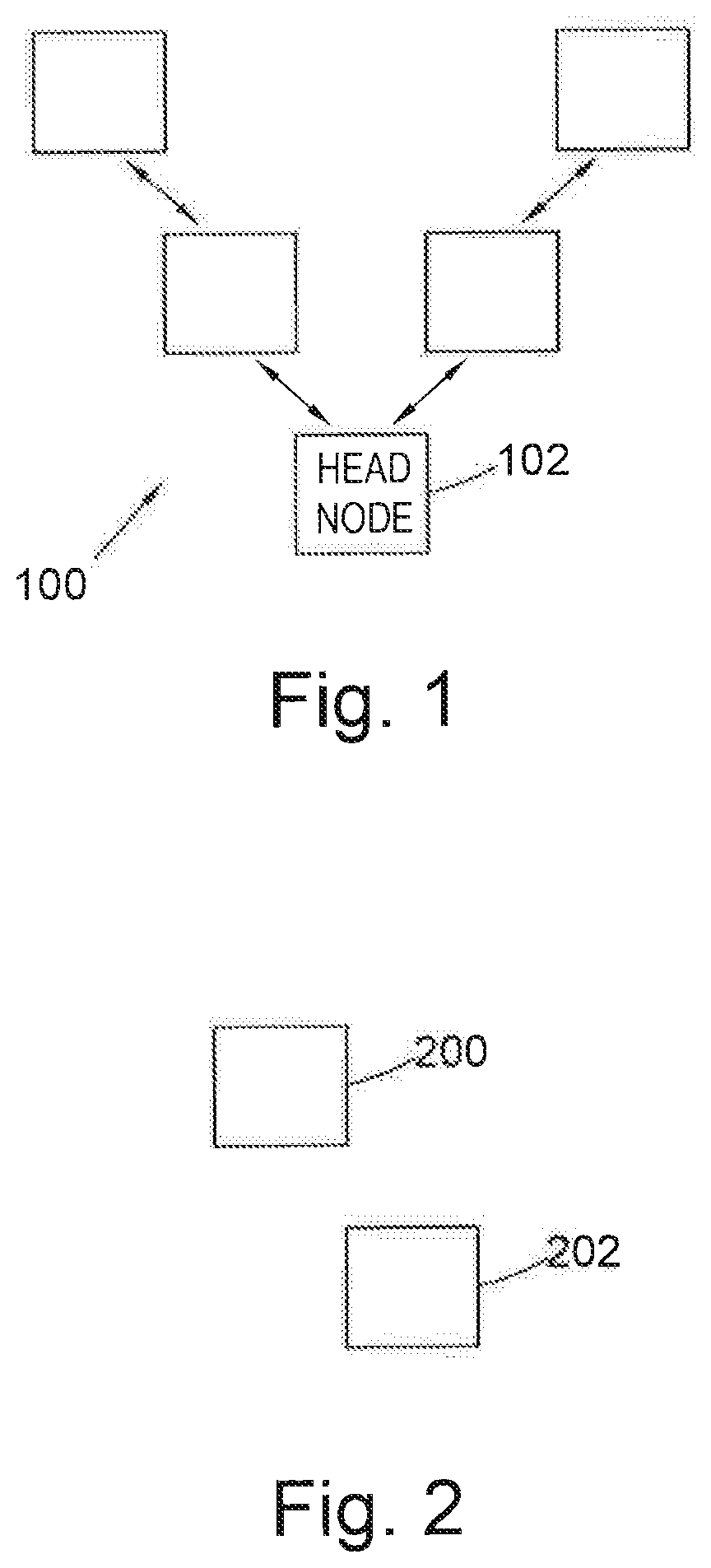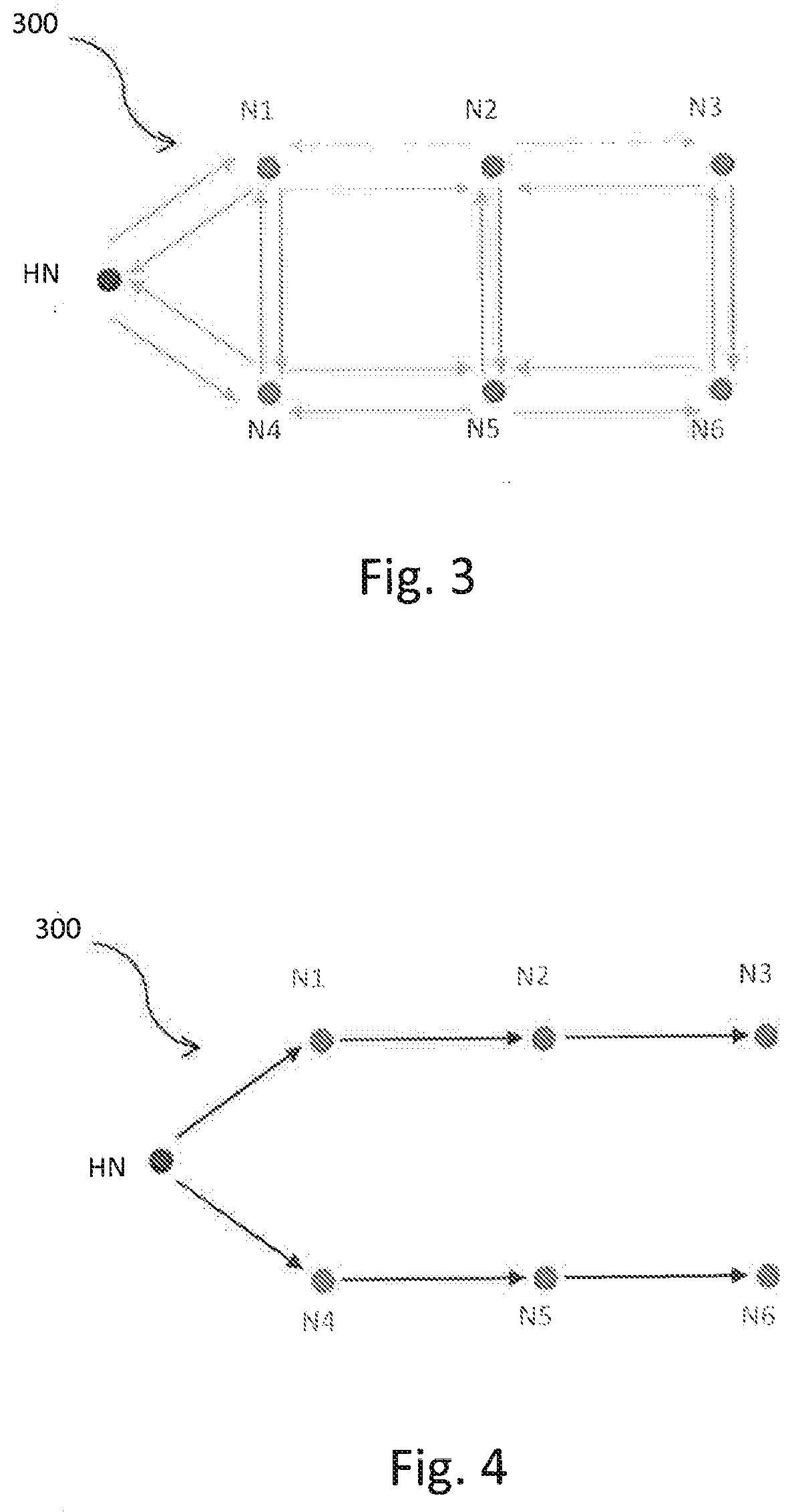Broadcast delivery techniques in a wireless network
a wireless network and wireless network technology, applied in the field of bluetooth networks, can solve the problems of inefficient network update sending, achieve the effect of avoiding redundant messages, reducing the number of messages sent, and saving energy
- Summary
- Abstract
- Description
- Claims
- Application Information
AI Technical Summary
Benefits of technology
Problems solved by technology
Method used
Image
Examples
Embodiment Construction
[0041]FIG. 1 shows an example BLE network 100 where the network 100 is depicted as a tree. A head node 102 forms the “root” of the network 100 and devices in the BLE network form “branches” in the network. Some BLE devices are not directly connected to the head node 102; instead they are connected via a branch node. This means that any transmissions sent from the head node 102 may have to be communicated through another BLE node before the transmission reaches its destination node.
[0042]FIG. 2 shows a first node 200 and a second node 202. The first node 200 and the second node 202 may be any two adjacent nodes in a BLE network 100. Here, the term “adjacent” means that the first node 200 and second node 202 are configured to communicate with one another directly, rather than through an intermediate node. Each node may be able to determine its position in a BLE network 100 relative to other nodes by storing identifying information about its neighbours. Neighbouring nodes may be define...
PUM
 Login to View More
Login to View More Abstract
Description
Claims
Application Information
 Login to View More
Login to View More - R&D
- Intellectual Property
- Life Sciences
- Materials
- Tech Scout
- Unparalleled Data Quality
- Higher Quality Content
- 60% Fewer Hallucinations
Browse by: Latest US Patents, China's latest patents, Technical Efficacy Thesaurus, Application Domain, Technology Topic, Popular Technical Reports.
© 2025 PatSnap. All rights reserved.Legal|Privacy policy|Modern Slavery Act Transparency Statement|Sitemap|About US| Contact US: help@patsnap.com



